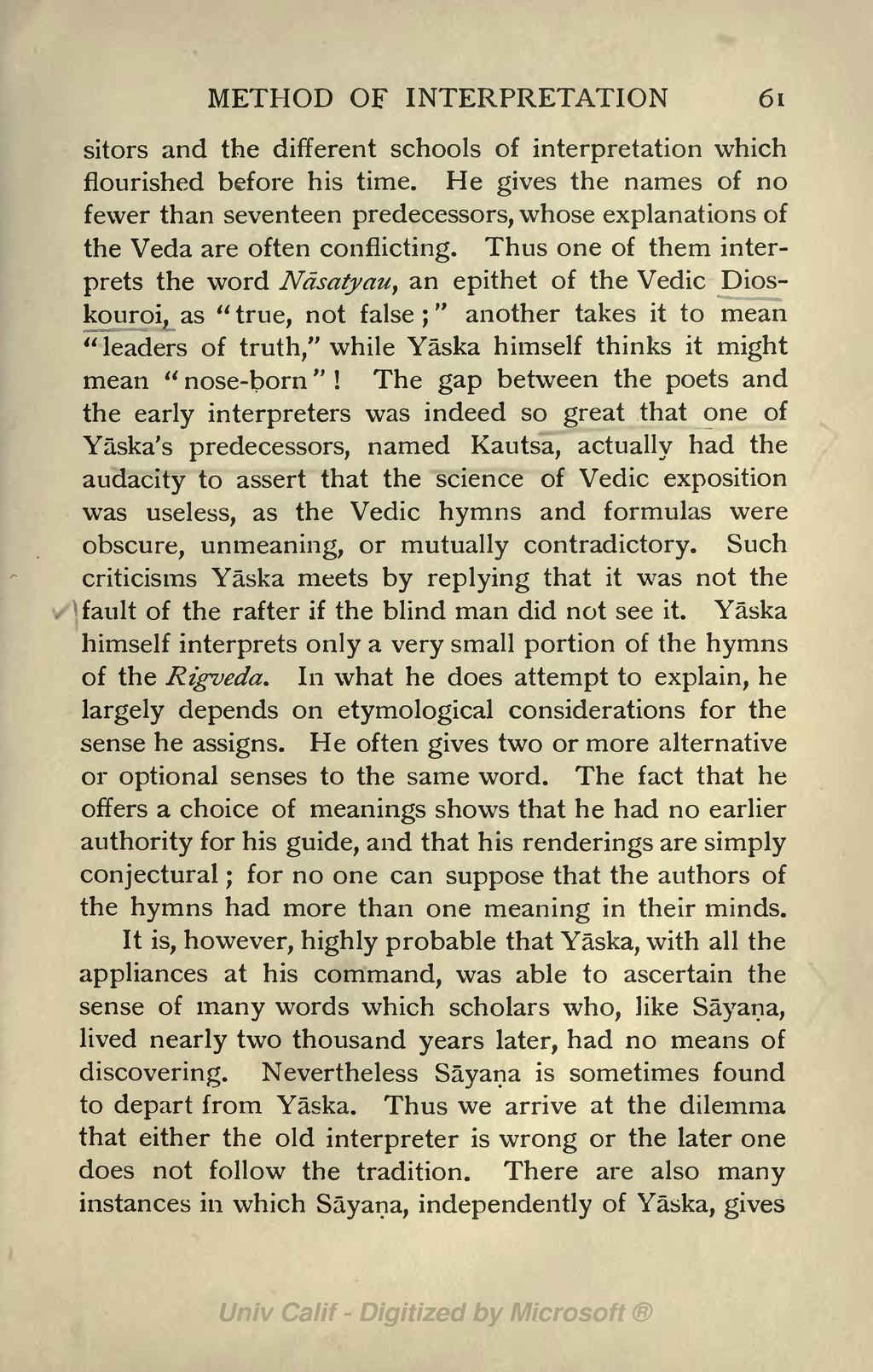sitors and the different schools of interpretation which flourished before his time. He gives the names of no fewer than seventeen predecessors, whose explanations of the Veda are often conflicting. Thus one of them interprets the word Nāsatyau, an epithet of the Vedic Dioskouroi, as " true, not false;" another takes it to mean "leaders of truth," while Yāska himself thinks it might mean "nose-born"! The gap between the poets and the early interpreters was indeed so great that one of Yāska's predecessors, named Kautsa, actually had the audacity to assert that the science of Vedic exposition was useless, as the Vedic hymns and formulas were obscure, unmeaning, or mutually contradictory. Such criticisms Yāska meets by replying that it was not the fault of the rafter if the blind man did not see it. Yāska himself interprets only a very small portion of the hymns of the Rigveda. In what he does attempt to explain, he largely depends on etymological considerations for the sense he assigns. He often gives two or more alternative or optional senses to the same word. The fact that he offers a choice of meanings shows that he had no earlier authority for his guide, and that his renderings are simply conjectural; for no one can suppose that the authors of the hymns had more than one meaning in their minds.
It is, however, highly probable that Yāska, with all the appliances at his command, was able to ascertain the sense of many words which scholars who, like Sāyaṇa, lived nearly two thousand years later, had no means of discovering. Nevertheless Sāyaṇa is sometimes found to depart from Yāska. Thus we arrive at the dilemma that either the old interpreter is wrong or the later one does not follow the tradition. There are also many instances in which Sāyaṇa, independently of Yāska, gives
